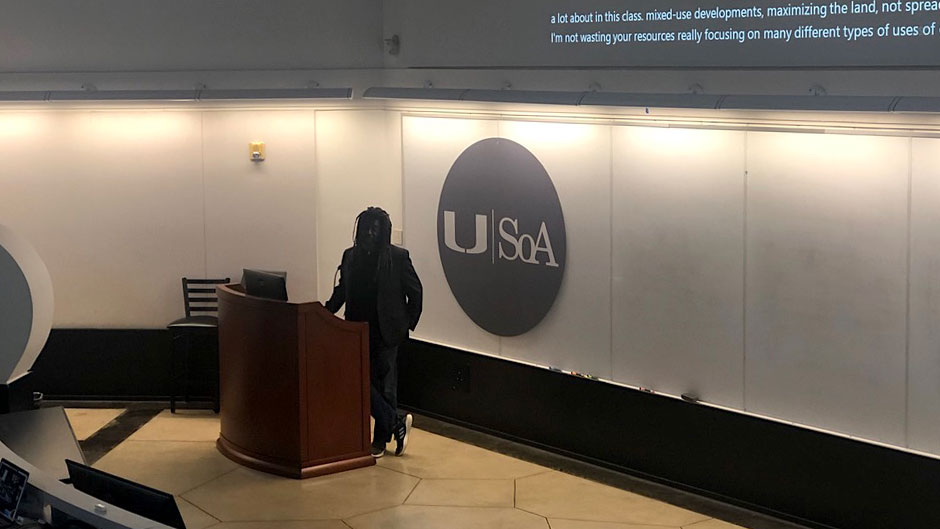“You must understand the ‘why’ of what you do.” This was the pivotal concept that EDSA principal and industry-leading design professional Kona Gray conveyed during his guest lecture for the U-SoA Urban Redevelopment course on Friday, March 24th. He explained the phrase is a call to action, one that is critical if architects, land planners, and others in the real estate realm are to answer the growing needs of an entire global society.
Gray then shared how past design and development decisions have led to today's circumstances. Negative decisions, such as pollution, urban sprawl, and disconnection from nature and culture, are why design professionals must now focus on remedying those damaged spaces while ensuring that their work respects and nurtures environments and people. Examples like The High Line in New York City, Wynwood Walls, and the Etereo Auberge Resort in Mexico demonstrated how successful design improves previously undesirable or underutilized spaces and brings new value to the surrounding area.
Likewise, positive choices like communities that integrate multiple aspects of life into a single place must be continued, Gray said, if designers are to take “development done right” to the next level. Historic Beale Street in Memphis, Tennessee, and the tight-knit villages and townships of Europe are living testaments to how people can live, work, relax, and enjoy all that life has to offer within a single destination. “It’s an idea we’re continuing to get back to,” he offered and shared plans for the upcoming FAT Village in Fort Lauderdale. This transit-oriented multi-use development combines residential, office, retail/entertainment, and outdoor space into a rich community mosaic.
Gray also highlighted, "The land was here first… without the land you have nothing… so be thoughtful and careful in what you choose to do with it.” Efforts like the United Nations Sustainable Development Goals, The New Green Deal, and the American Society of Landscape Architects’ Climate Action Plan are already setting new standards for protecting real estate’s most valuable asset. It will be up to the next generation of professionals to make it happen. To that end, Gray reminded students and attendees that progress never happens alone and that collaboration is vital to creating the best possible results. “At the end of the day, you’re designing more than a space or a building,” he said. “You’re creating places for people to live… for local businesses to grow… opportunities to make money and reinvest in their communities. That’s all the kind of connection between the buildings, and that’s something that matters. You’re creating a plan for people.”
The MRED+U program offers guest lectures as part of the Urban Redevelopment course. Our guest lecturers are members of our Advisory Board and other real estate leaders prominent in our community. The speakers enhance the already multi-faceted weekly curriculum by drawing upon their experiences with past and current real estate projects. This direct tie-in with the curriculum reinforces the practicality of the academic concept with live examples of how the concepts are implemented. Not only does this provide a unique and personalized learning opportunity for our students, but it also offers them a chance to build their network with real estate leaders so they are better equipped to interview and apply for internship and full-time positions during and after the MRED+U program.

